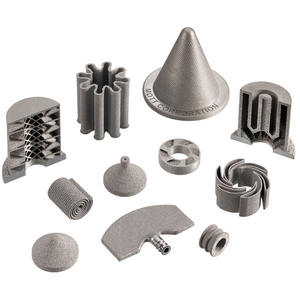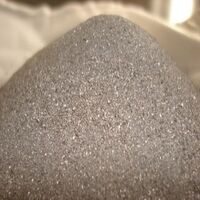**The Go-To Goo: What’s Fueling Your 3D Printer’s Magic?**
(What Is The Most Common Material Used For 3d Printing)
Imagine a world where you can turn a digital doodle into a real-life object in hours. That’s 3D printing for you. But here’s the big question: what’s the secret sauce making this magic happen? Meet PLA, the quiet superstar of the 3D printing universe. It’s everywhere, from hobbyist garages to high-tech labs. Let’s break down why this unassuming material rules the roost.
PLA stands for polylactic acid. Sounds fancy, but it’s basically corn syrup’s cooler cousin. Made from fermented starch—like corn or sugarcane—it’s the eco-warrior of plastics. Unlike its oil-based siblings, PLA breaks down over time. Toss a PLA print in industrial compost, and it’ll vanish faster than you’d think. For planet-conscious creators, this is a big win.
Now, why do people love PLA? First off, it’s easy. Think of it as the training wheels of 3D printing. Newbies can jump in without fearing a melted mess. PLA melts at low temps, around 180–220°C. Your printer won’t need a PhD to handle it. Plus, it doesn’t warp much as it cools. No one likes a spaghetti-like disaster mid-print, right? PLA keeps things tidy.
Then there’s the smell. Ever sniffed a 3D printer at work? If it’s using ABS plastic, it reeks like burnt popcorn. PLA? More like a faint whiff of syrup. Your nostrils (and your roommate) will thank you.
Looks matter too. PLA comes in every color under the sun—glow-in-the-dark, metallic, even translucent. Want a neon-green dinosaur or a marble-effect vase? PLA’s got your back. It’s also smooth to print with, so your creations come out sharp, not fuzzy.
But hold on. PLA isn’t perfect. It’s like that friend who’s awesome at parties but crumbles under pressure. Leave a PLA print in a hot car, and it’ll sag like a sad ice cream cone. It’s brittle too. Drop a PLA phone case, and it might snap. For tough, outdoor-ready parts, pros switch to materials like PETG or nylon.
Cost plays a role. PLA is cheap. A spool costs about $20, way less than fancy alternatives. For prototypes, toys, or classroom projects, why spend more? Schools and makerspaces stockpile PLA like candy.
The fun doesn’t stop there. PLA’s flexibility sparks creativity. Mix it with wood fibers, and you get prints that look like mini lumber. Add carbon fiber, and suddenly your print is tough enough for robot parts. There’s even edible PLA (though we don’t recommend snacking on your printer).
Of course, PLA has limits. It’s not the best for heavy-duty jobs. Sunlight and water wear it down over time. But for most everyday magic—custom phone cases, cosplay gear, quirky desk toys—it’s the golden ticket.
(What Is The Most Common Material Used For 3d Printing)
So next time you see a 3D printer humming away, remember the humble hero behind the scenes. PLA might not be flashy, but it’s the glue holding the 3D printing revolution together. Want to try it? Grab a spool, fire up your printer, and let the creativity flow. Just keep those prints away from your summer beach bag.
Inquiry us
if you want to want to know more, please feel free to contact us. (nanotrun@yahoo.com)

